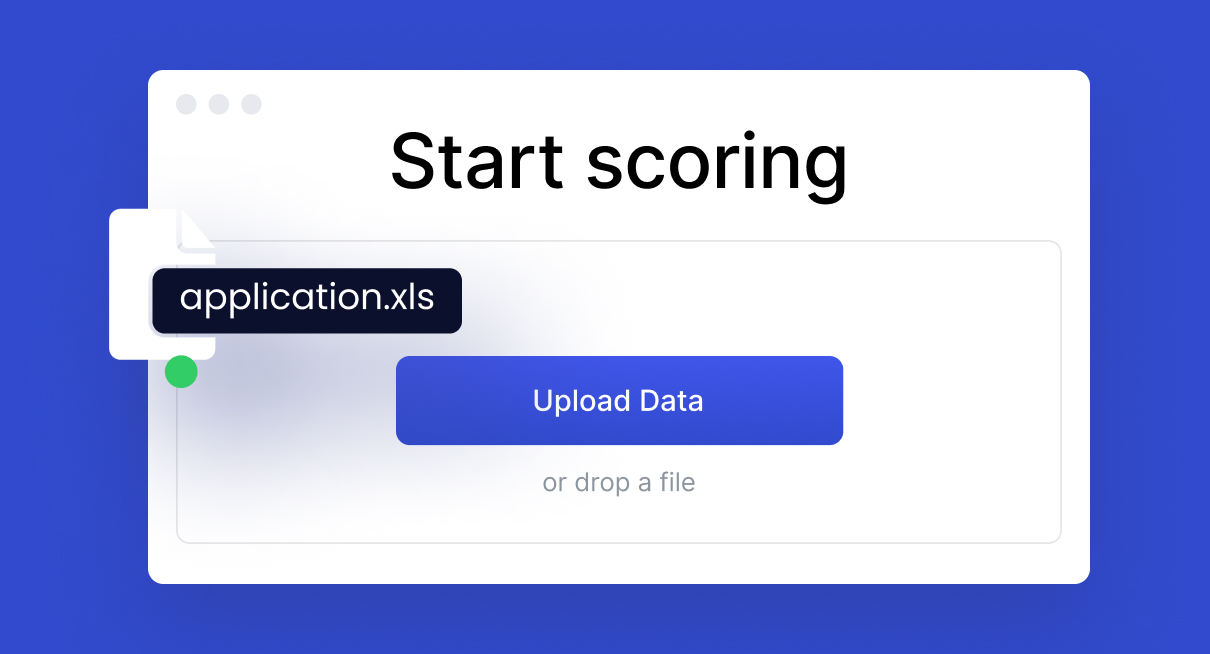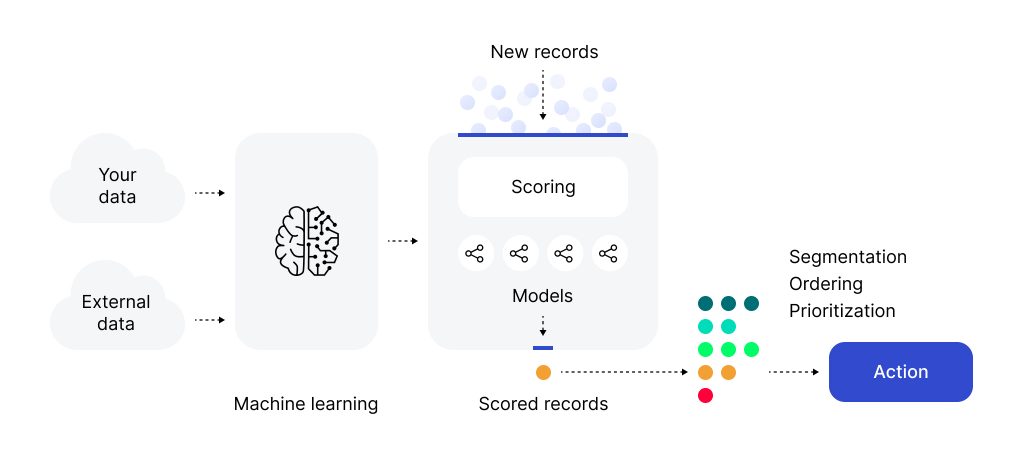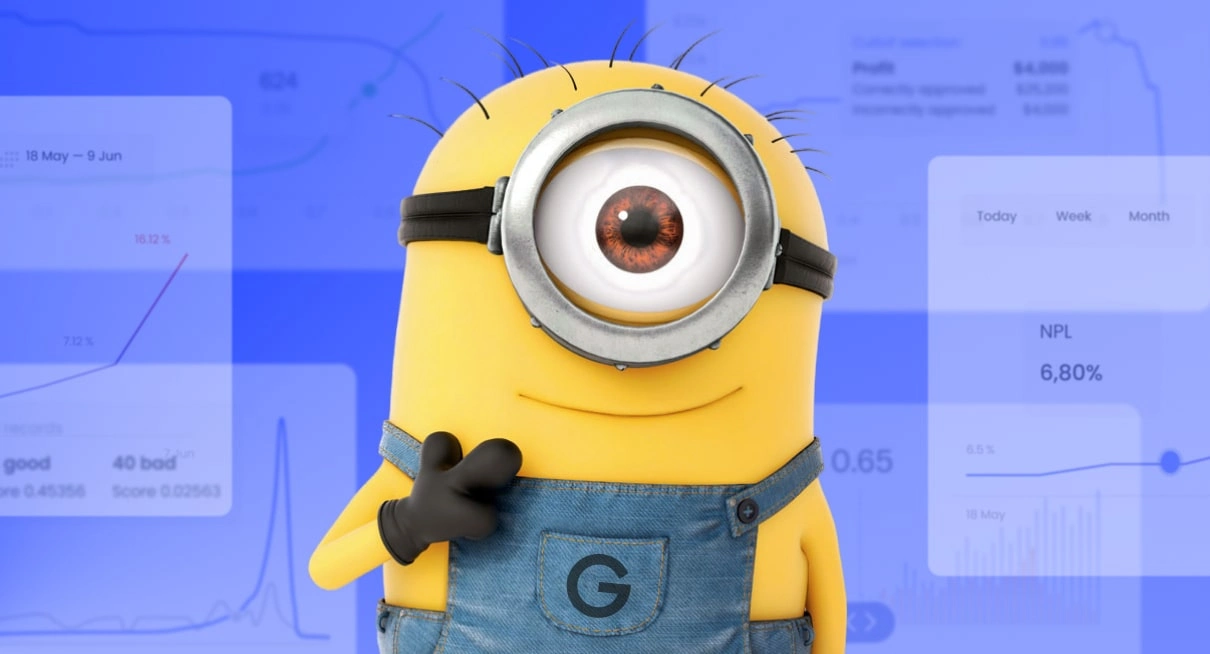
A good predictive model is a result of good data. If you’re using the wrong data or not enough data, you’re building the models in vain. To avoid missteps, it’s significant to understand how training and testing data in machine learning work
We often get asked about the difference between training and testing data sets. That’s why we decided to prepare a dedicated guide through training vs testing data, the important components of a good training model, and the significance of building quality models
What Is Training Data?
Machine learning builds predictive models based on your data and learns on it. In ML the data is divided into two sets, and the first one is known as training data. So, what is training data?
To put it simply, let’s imagine a rocket that needs fuel to take off, the same is with GiniMachine – an AI rocket will never fly without enough fuel – data. The trick to applying AI correctly to small and big data-connected problems is in having historical (training) data. The training set contains the labels called labeled set, without them – unlabeled. According to the structure of the data different machine learning algorithms and methods would be used (build) upon the data.
Training dataset in machine learning is the fuel that feeds the model, so it’s larger than testing data. Since more data result in more accurate predictive models. Once a machine learning algorithm is provided with data from our records, it learns patterns from it and makes a model for decision-making.
Algorithms enable to make decisions based on past experience of a company. It analyzes all the previous cases and their outcomes and based on this information can make models to score and predict the outcome of current cases. As ML models are exposed to more data, the more they improve the accuracy of predictions over time.
Training records should include data known at the time of the application process, for instance:
- Name and contact details, location.
- Demographics, social and behavioral attributes.
- Source of origin (Meta Ads, website landing page, third party, etc.)
- Factors connected to the behavior/activity on websites, conversions, time spent on a website, number of clicks, and more.
What Is Testing Data?
Once your machine learning model is built with your training (historical) data, you need to test it. In this case, the AI platform uses testing data to evaluate the performance of your model and adjust or optimize it for improved results. So, what is testing data, and where to take them?
Good news is that you don’t need to spend months collecting new data and comparing predictions with actual data. While training the model, you can put aside some of the available data and use them to test the trained model. This data used to test the model is called testing.
So having a huge data set at hand, we can check if it’s possible to make predictions based on that data or not.
How Training and Testing Data Work in GiniMachine

The difference between training set vs testing set of data is clear: training data trains the model while testing checks (tests) whether this built model works correctly or not. However, some users still can use their training data to make predictions. Good news: using GiniMachine, you don’t need to worry about it. The platform will divide your data into testing and training for you. Here’s how it works in GiniMachine.
The evaluation process in GiniMachine is called the blind test. During the test, our system performs the check by predicting the scores for the hold-out set and calculating the evaluation metrics. GiniMachine runs a blind test every time you build a model. It divides your data set in a ratio of about 70% to 30%, where the first figure is training data and the second is testing. The system is able to work with custom ratios and stratifications on multiple targets as well as double factor ones.
As a result, GiniMachine evaluates the quality of a model and presents its index to users who can decide whether to build a new one with different data or try the model in scoring.
GiniMachine: how much data is enough for Machine Learning
You might have seen that GiniMachine requires at least 1,000 records to build a model. There exists a so-called industry standard: to build a reliable model, you need to use 1,000 bad records + X number of good ones to come up with a decent model. For instance, 1,000 non-performing loans + X ones with successfully repaid debts.
However, there’s no one fits for all solution. Indeed a good result is achieved if we have 1,000+ examples of lower power records (for instance, there’re usually less bad loans in the credit scoring domain). But it’s one thing when we have 3% of bad applications/deals (in this case we need 30,000 records) – having 50% of bad applications is a totally different thing. In this case, 2,000 records might be enough to build a good model.
It’s always a challenge to figure out how much is needed to achieve good results. Sometimes you can build a highly-performing model with 100 training records, sometimes hundreds of thousands are not enough. That’s why the greatest advantage of GiniMachine is an opportunity to experiment with models, data, training parameters, etc. We don’t set limits on model training attempts and analyzed parameters and attributes. You can experiment and pick the most suitable testing and training dataset in machine learning for you to build a really perfect predictive model for your business.
Why the Quality of a Training Model Matters
GiniMachine models achieve high predictive power and the capability to generalize well. Generalization is the ability of the training model to fit well with new, unseen data. The thing to mention here is finding the right balance, where you shift between models with high bias and those with high variance. So, if you have a high variance error more data should be used. In case of having high bias, more features could be used.
More features will often lead your model to come up with better solutions. More features also increase the complexity of your model. The curse of dimensionality is a great phenomenon to figure out how high cardinality impacts a model. Using the right metric results in a higher chance of having a bigger business output, for instance, an increase in conversion rates, sales, income, revenue growth, market presence, and more.
How to Bring Your Data into Work
Now understanding the difference between training vs test data, it’s a perfect time to put your dataset into work. GiniMachine is designed for various types of products and services, such as demand forecasting and sales lead scoring, healthcare and agricultural forecasting, credit and debt collection, etc. The platform can work with any business domain, everything depends on your data and desire to find the perfect set of records to build a model and start scoring.
If you’re ready to try GiniMachine, contact our team to book a demo and we’ll show you how it works.



